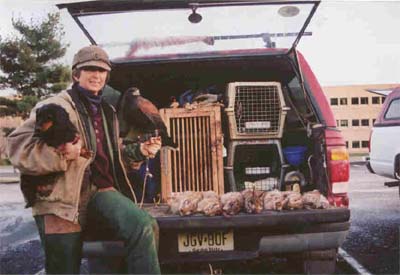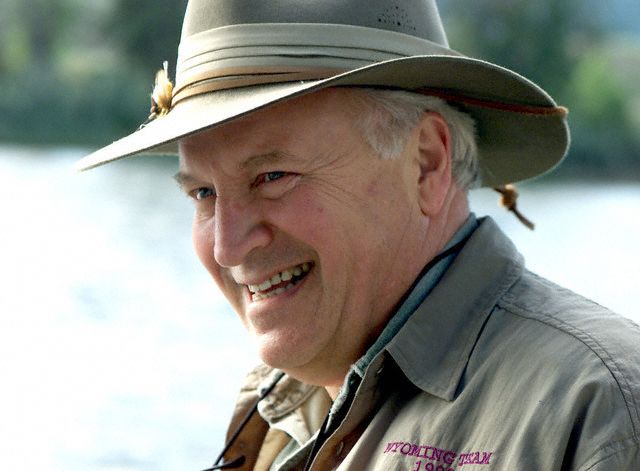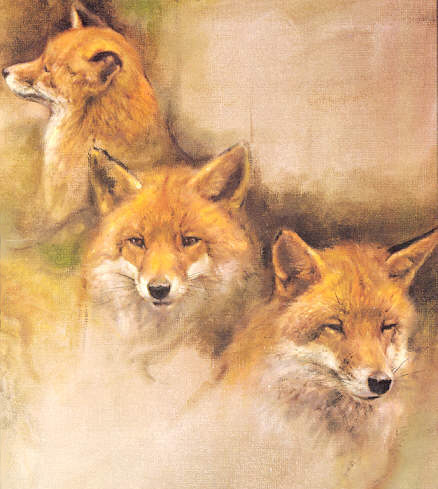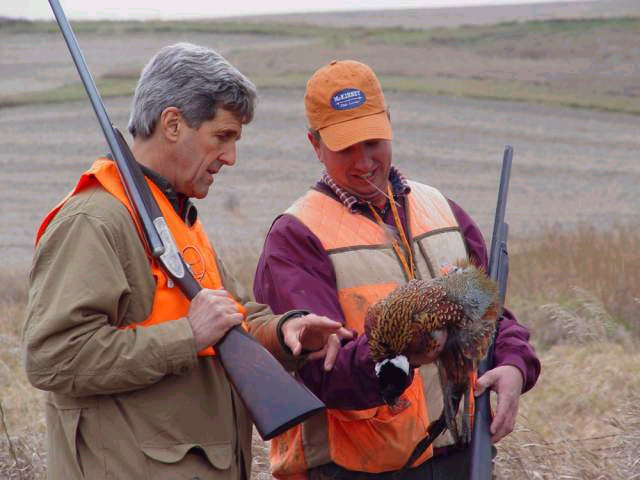
.
Kerry-Edwards: Sportsmen's Bill of Rights "As a life-long hunter and fisherman, I am proud to be among the millions of American sportsmen and sportswomen who are dedicated to conserving fish and wildlife and passing along the American hunting and fishing heritage to the next generation." -- John Kerry
"A Kerry-Edwards administration will create a
Sportsmen's Bill of Rights with America's sportsmen and sportswomen to ensure that the basic rights of all Americans to legally and safely hunt and fish are protected.
Our Sportsman's Bill of Rights contains six rights:
a The Right to Own Firearms: John Kerry and John Edwards will always support the Second Amendment right of law-abiding American citizens to keep and bear arms, such as rifles and shotguns, including semi-automatic firearms used by hunters and sportsmen across this country. Gun rights are fundamental for the sport of hunting, and they will vigorously support those rights.
Like President Bush, and sportsmen and law enforcement officers across this nation, John Kerry and John Edwards also support the extension of the current assault weapons ban.
a The Right of Access to Areas to Hunt and Fish: One of the greatest challenges facing hunters, and to a certain extent anglers, is the dwindling access to nearby places to hunt and fish. More and more, America's sportsmen and sportswomen are facing the loss of land to urban sprawl, leasing of private lands for pay hunting, or simply an unwillingness of private landowners to risk the liability associated with the public hunting or fishing on their lands.
A Kerry-Edwards administration will work to open millions of new acres of land to public hunting and fishing by providing better funding for state walk-in access programs. A number of states currently pay private landowners, on a voluntary basis, to open their lands to the public. This has resulted in millions of acres being made available in the West and Midwest to hunting and fishing. These programs need more resources. That is why John Kerry and John Edwards have supported legislation called the "Open Fields" bill. This bipartisan legislation will provide $50 million each year to state agencies to strengthen existing walk-in access programs and to encourage states that do not currently have walk-in programs to establish them.
a The Right to High Quality Fish and Wildlife Habitat: As every hunter and angler knows, healthy and abundant habitat is the key to maintaining fish and wildlife. A Kerry-Edwards administration will focus the efforts of the Department of Interior, Department of Agriculture, and U.S. Environmental Protection Agency on conserving and restoring habitat throughout this country. Some of this work will entail expanding the use of voluntary, incentive-based land and water conservation programs that target private landowners and farmers. In other cases, it will involve enhancing upland habitat or better protecting water quality on federal lands.
In the case of wetlands, where so many birds and fish live, the situation is critical. Loss of wetlands threatens the future of waterfowl hunting as well as of fishing, bird-watching, and even water quality. John Kerry and John Edwards will ensure that the Fish and Wildlife Service immediately develops and implements a comprehensive plan to restore thousands of acres of wetlands lost over the last few decades and that the Environmental Protection Agency (EPA) and the Corps of Engineers strengthen protection for wetlands. A Kerry-Edwards Administration will rewrite the existing field guidance for EPA and the Corps to ensure the maximum protection of wetlands. They will also increase funding for wetlands protection and restoration under the North American Wetlands Conservation Act.
a The Right of the Protection of Wildlife from Irresponsible Oil and Gas Drilling: While there is no doubt that America needs to find and develop more natural gas and oil reserves, the current effort to exploit these resources on federal lands in the West is putting fish and wildlife unnecessarily in harm's way. Under a Kerry-Edwards administration, the federal land management agencies will take seriously the multiple use mandates and ensure that fish and wildlife resources are not sacrificed to irresponsible drilling. Lands that are better used for hunting, fishing, camping, and other uses not compatible with intensive drilling will be set aside.
At the same time, more resources will be devoted to strengthening federal land management field offices. This will allow better land management plans to be developed with input from all interested parties - including hunters and anglers, ranchers, and local businesses that rely on a healthy range - so that necessary monitoring can take place and decisions on legitimate proposals to develop these oil and gas resources can be made in a timely manner. And where federal lands are leased and permitted for energy development, sufficient protective conditions will be applied to ensure that fish and wildlife are not adversely affected.
a The Right of Wise Management of the National Forests: Many fish and wildlife species depend on the wise management of the national forests. In previous years, the management of our federal lands too often has been driven by politics rather than by common sense. Some management needs to take place each year. John Kerry and John Edwards will undertake legitimate thinning projects to reduce the risk of fire around communities and to create a mosaic of habitat in the forest. In managing the forests, they will also seek to protect the remaining wild places and critical spawning habitat. To provide hunters, anglers, and hikers with the solitary experience many of us seek from time to time, and to prevent further fragmentation of our forests, we should prevent the construction of new roads into our remaining roadless areas.
a The Right to Fair Share of Federal Funding for Fish and Wildlife Programs: Sound stewardship of the nation's fish and wildlife, and the habitat on which they depend, relies on a consistent commitment of resources to federal and state natural resource agencies. The Conservation Security Program-if properly implemented and fully funded-also provides enormous potential by making financial and technical assistance available to farmers to promote the conservation and improvement of soil, water, air, energy, plant and animal life on private working lands. Federal tax policy also can contribute to conservation by encouraging the donation of easements on private lands, which ensure that these lands will remain free of destructive development in perpetuity. John Kerry and John Edwards strongly support guaranteed and increased funding for federal and state fish and wildlife programs and for public land conservation. In addition they will enhance tax incentives on donations of private lands for conservation.
Farm programs like the Conservation Reserve Program and the Wetlands Reserve Program have contributed enormously to the cause of conservation, to improved water quality, and to farm and ranch income. These voluntary programs represent an important partnership between landowners and hunters. John Kerry and John Edwards will work with the conservation and agriculture communities to expand these programs. They will also work to use the Farm Bill to maximize benefits to fish and wildlife consistent with providing strong economic support to rural America through existing farm programs.
Throughout the United States, diseases, such as Chronic Wasting Disease (CWD), are affecting our nation's wildlife populations. Kerry-Edwards will empower the US Department of Agriculture and the US Department of the Interior to further study and better coordinate the scientific research into the prevention and eradication of CWD and similar wildlife diseases. They will also provide increased federal funding to further research CWD and to identify and implement effective management strategies.



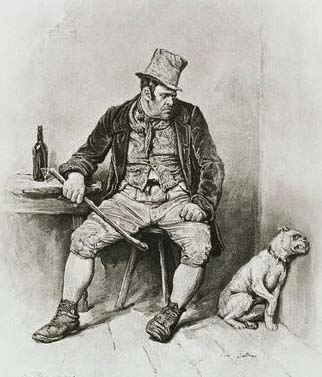 .
. .
.

